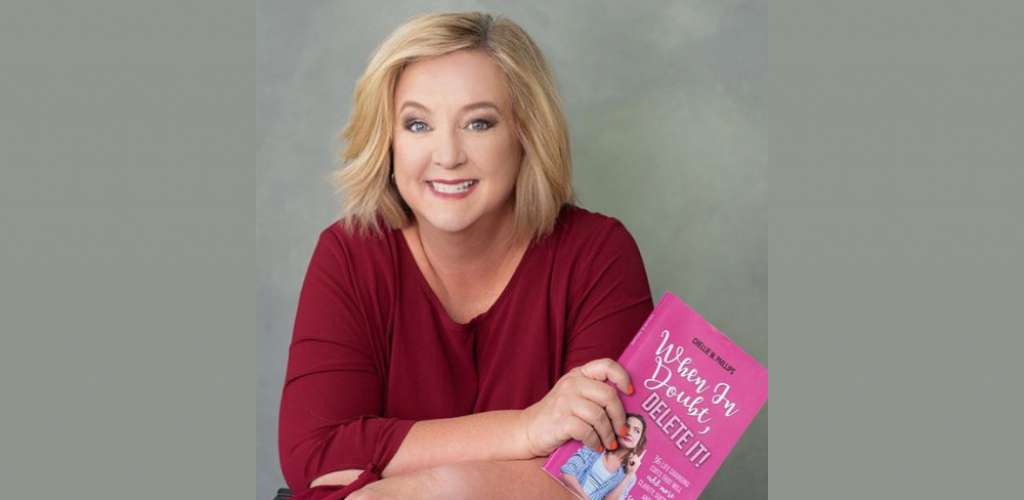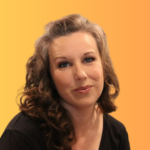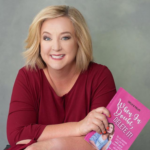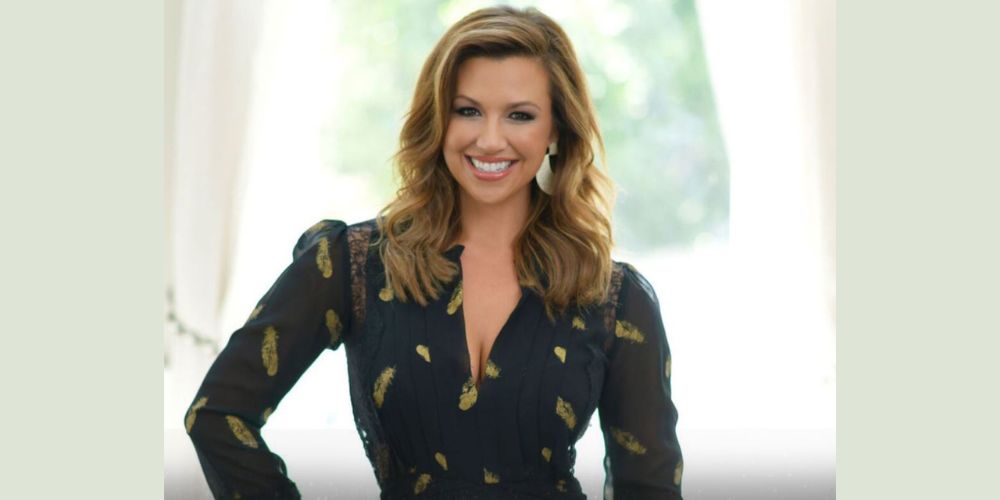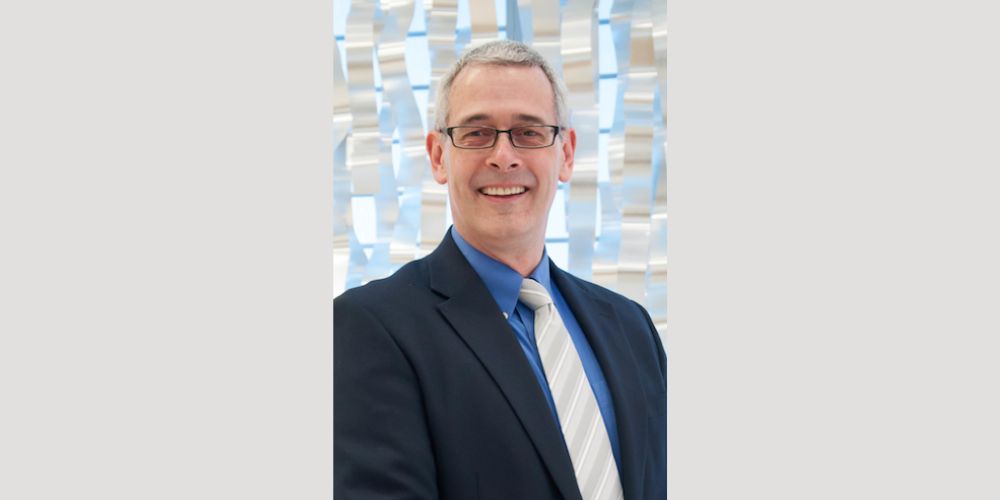Raj Girn: In our first episode back, I will be focusing on what I feel needs to be a communications-themed episode, and it’s entitled How Irresistible Am I. My guest today is executive coach, speaker, trainer and change agent, Chellie Phillips, who has written two books entitled When in Doubt, Delete It and Get Noticed Get Hired.
Here is our conversation:
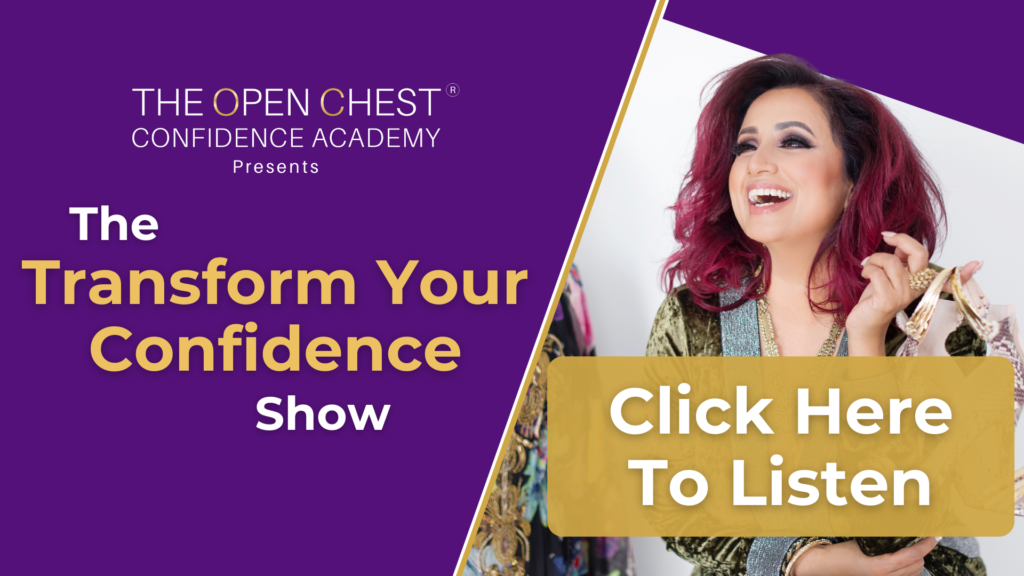
Raj Girn: Who better to address this topic than she? So without further ado, let’s welcome you to the show, Chellie. How fabulous are you, cannot wait to double down with you.
Chellie Phillips: Thanks so much for having me. And I just have got to say kudos to you for recognizing and taking time to regroup and refocus and recenter because you know, as busy professional women, or busy professionals period, whether you’re male or female, it is so important that we take time for ourselves to make sure we’re taking care of ourselves, make sure we have our message correct and everything. So big kudos to you for doing that and talking about it.
“As busy professional women, or busy professionals period, whether you’re male or female, it is so important that we take time for ourselves to make sure we’re taking care of ourselves, make sure we have our message correct and everything.” ~Chellie Phillips
Chellie, thank you so much. And that just feels good. And it feels right to take those moments out when you need to. And sometimes you just don’t know why. I knew my why, because it was eight months of shit show that I needed to go through. You know, but it was a wonderful success, which is great. And I love it when others. . .
And I’m going to have a stretch here when I say this, but I feel that you may be this kind of person, similar to me, an alpha female, always taking charge, always making sure that you know your focus driven, always making sure that every layer and fabric of your being, your narrative, is being serviced. So I feel really seen and heard by the fact that you recognize that this is important because a lot of us still don’t. We all still feel that we need to fight the big fight, whatever that may be in our worlds. Which oftentimes we do, but I kind of feel that rather than fighting our way in that we need to tool ourselves up.
So let’s start by sharing with everyone that is watching, listening and reading this a little bit about your journey. Anything that you feel you’d like to share from a personal perspective. And definitely everything about your professional milestones, because then I want to set the context for the discussion that we’re going to have today. And the fact that you’re your own boss, and that you found a space that you felt needed help, and you stepped in to make that happen. Let’s go back.
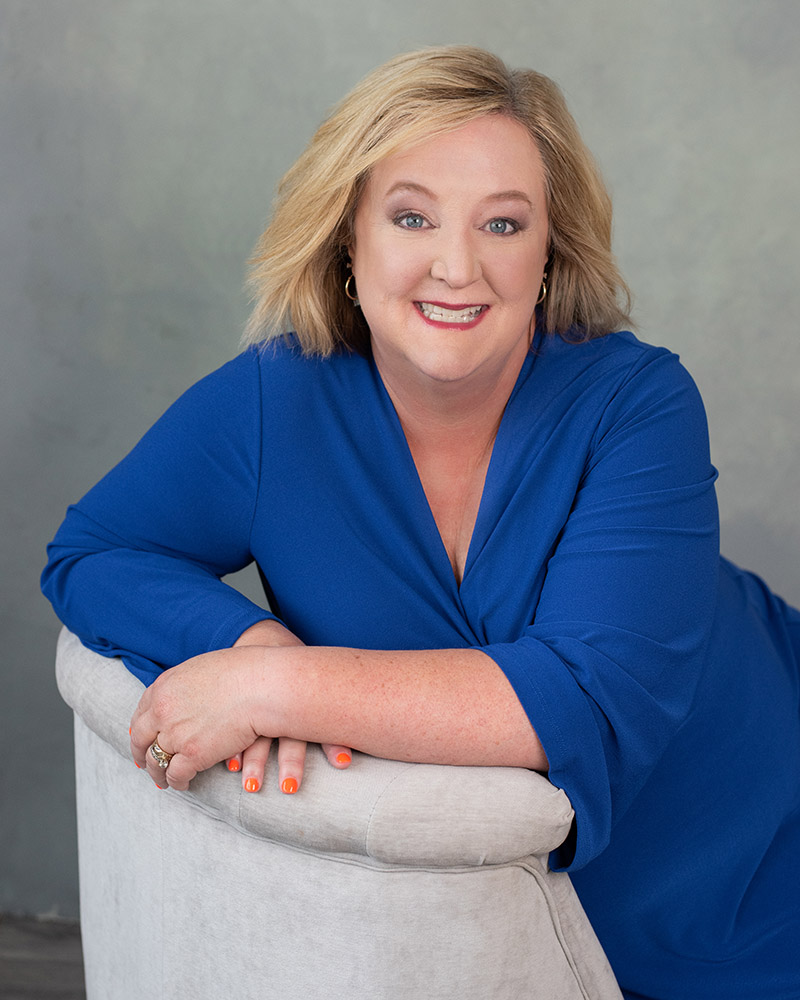
Credit: @chelliephillips.com
So yeah, absolutely. Just to give you a little idea of where I came from and how it’s all materialised. I began my career in journalism. And so it was all about listening to other people tell their stories. And a couple of things that I’ll say about that is it made me a good listener. And I think that is one thing that is very key for all of us that are success driven, is that we listen to the people around us.
We learn so much from others, from their journeys, things to avoid, things to grab on to and emulate. But we have to actually stop and listen. A lot of times we’re busy thinking about, “Oh, how am I going to respond? What’s going to come next.” And we miss some key points, because we’re always thinking ahead, trying to move faster, get there quicker, whatever. But slowing down and just listening and taking it all in and processing it is so important. So I did that for several years.
And then I moved into corporate PR. And I got really involved with branding and marketing and telling a corporate message. And what I learned is, it’s really not that much different than than telling somebody else’s story. It’s just either about a product or a service instead of a person or themselves. I did that for 25 years, very successfully. I had a lot of industry recognition and everything. But then I had a new boss come in. And it changed everything for me.
I went from having a seat at the table and feeling like my skills were valued and appreciated and needed, part of the circle that was making decisions and being included on programs and directions that we were going, to someone who just felt basically relegated to you’re the newsletter person, the website person, we don’t need your involvement in anything anymore.
And that came to a head one evening when I was at an event working and we did a magazine that went out to our customers and everything. And I get an email from them saying that “my daughter doesn’t like our magazine.” So basically, I sucked at what I did. Well, his daughter was 17 years old. And our magazine was geared for someone 35 to 55 years old. So if she really loved the magazine, I’d be very surprised. Not the target audience. He wound up that email by basically saying he was disappointed that he thought my skills came from something more than a box of cereal, like the prize inside when we were kids.
And at the time, I was absolutely devastated. But now I am so grateful for that email because it was the kick in the pants that I needed. Because I had been toying, do I stay here? I’d been there 25 years. You know, you’re vested in all the retirement and the pension and everything else at that point in time. And I had grown up in my career with a lot of these people. I knew their families. I knew their kids. I knew everything that was going on in their life. So it wasn’t just leaving a job. It was like leaving a circle of people as well. I think that stops a lot of people. That fear of the unknown. Like if I leave this, what’s going to happen next?
But I say to everybody now, having a jerk for a boss was probably one of the best things that ever happened to me, because it was that kick in the pants that I needed to take that step out and start the journey on my own. I say if it wasn’t for that, I wouldn’t have my own company now. I wouldn’t have written the three books that I’ve written. And, you know, I wouldn’t be on this journey to be able to boost other people and share what I’ve learned along the way to help them get there too.
“I say to everybody now, having a jerk for a boss was probably one of the best things that ever happened to me, because it was that kick in the pants that I needed to take that step out and start the journey on my own.” ~Chellie Phillips
And I can’t wait to ask you exactly what that was, Chellie. What was the gap in the marketplace that you saw that led you to your own current line of work? And can you explain a bit about what that actually is? Because it’s a bucket list of things.
So I started . . . I volunteered with a university group in the state that I lived in. And I worked with the leaders inside that organization every year, developing them, getting them ready to tackle the professional world and everything. And what I was seeing is that when they graduated, if they didn’t get an offer in their field initially, and they took what I call a get-by job, whether it was office work, or a barista or retail or something until they got an offer in the field that they had studied. And when they got it, the offer was coming in $5,000 to $8,000 less than what their counterpart who had just walked across the stage got the diploma and had no experience in the workplace was getting a higher offer.
And I couldn’t wrap my head around it. Like how did going to work, devalue my education? Or, in this case, these women’s education at that point in time. And I really got busy working with them on how do I show up? How do I make myself the irresistible the most visible candidate? And how can I reframe and rebrand what I’ve learned in the workplace so that it applies and makes me the more qualified candidate that gets that higher offer?
They’ve been working. They show that they’re dependable. They’ve dealt with customers. They’ve dealt with co-workers. They’ve performed tasks. So why that would make you less valuable than someone who’s never done any of that was just crazy to me. And so, that was the start of that I was doing to help these women and set them up in their professional career and get started.

And then when I had my own change with the boss that came in. And I was like, I need to look for a job myself and realised, you know, I’ve worked in branding and marketing for years and I really haven’t done a great job of branding and marketing myself because I was happy where I was. And I wasn’t thinking about the future, or the fact that I needed to have all this ready to go in case something happened.
So taking a look at the resume and realizing, oh, it’s been 10 years since I updated this thing. Oh, my God, what am I going to put on here now and make it current? What are the skills that people are looking for now? And so it was a real eye opening experience. And then after, of course, when we had COVID and everything people took the time to really start reflecting on, am I doing what I really want to be doing? Is this where I want to spend my time anymore?
And so people have gotten much more conscious about where they are, where they’re spending their time, how they want to feel when they’re in the workplace. And so that has turned into my own business as to where I help you get noticed for the right reasons in the workplace, whether you’re a young professional, or whether you are looking to make another move and try something different later in your career. Or if you’re the company, how do you attract the right people so that you build a workforce of engaged employees that feel that they’re valued and contribute to the success of the organization?
“People have gotten much more conscious about where they are, where they’re spending their time, how they want to feel when they’re in the workplace. And so that has turned into my own business as to where I help you get noticed for the right reasons in the workplace, whether you’re a young professional, or whether you are looking to make another move and try something different later in your career.” ~Chellie Phillips
You know, before we get into how you help people accomplish that, I want to ask you, in case anyone’s not clear, I feel the answer is literally everyone, but I’m gonna defer to your expertise, who is your ideal client?
There’s really two buckets that I work with. Like I said, there’s the corporate client that’s wanting to really create that culture inside their organization where their employees feel valued for their contribution, where they feel like they have a voice where they’re heard, where they’re part of the decision making, where they feel like they’re having an impact. In the research that I was doing, the number one thing people want to feel in the workplace is that they belong. Belonging is such a human need, whether we’re at work, whether we’re their group of friends, whether we’re with our family, we want to feel like we have some place where we connect with the people, where we feel like we’re part of what’s happening and that we belong here. This is something that I can wrap my hands around and really be proud that I’m doing.
And then the other is either the young professional, or the mid career professional that’s looking to make that change for how do I show up in a way that presents myself in a way that they just can’t forget me, that I become that irresistible candidate that they just can’t wait to hire and put in that position?
So let’s talk about how you help people do that? Can you run us through how you set your clients up to win in this capacity? What is the job that you take your clients on when they come to you and they choose to work with you?
The first thing I like to do is I really ask people, do you have a personal brand? Because people don’t think of themselves as an asset, so to speak like that. My brand has a reputation. But really brand just means what do people think of when you’re not in the room to tell them what they need to think about you? Right? And so the first thing I get my clients to do is actually go find five people and ask them, what are the first five skills that you think of when you think of me in the workplace? So whether that’s leadership, or whether you’re great at Excel, or whether you’re a perfect presenter, or whatever that skill is, ask some people and find out what you’re showing up as on a daily basis.
Because you could be surprised. It may not be what you think. It can be very eye opening, because there may be some things that you take for granted that other people really think these are great assets and skills. And it’s a way for you to really add to that list of things that you can talk about and show off inside an interview situation or something like that. You may think it’s just secondhand that is something easily that comes to me, but it’s really a skill that other people value and find worth in.
So after they’ve done that, then we really start positioning. What position Is it that you want? What kind of job is it that you’re seeking? What kind of skills do you want to exhibit on a daily basis? And I have them go search for a few job descriptions that interest them, because then we take those and we start packaging their resume, their cover letter, their LinkedIn, in a way that reflects those kinds of positions so that they attract those offers, or they attract recruiters looking for them so that they can actually have the option to go for those.

Can we talk a little bit also about the corporate side. I know that’s a bigger area that you deal with and a lot of it is about helping everyone fit within a specific corporate culture, which is a very pop cultural word today. A lot of people don’t really understand what that means. Can we maybe address that for anyone out there who is a part of a company and wants to be able to maybe invest a little bit more understanding in what corporate culture is and why it matters?
So culture, you know, depending on who you talk to . . . Some people go “Culture, oh, that’s the swag that you get when you go someplace, or that’s the pizza party that we had because you did a good job.” That’s not culture at all. Culture is the why and the how things get done in the business. It’s a verb actually. That’s the way I like to look at it. And so what I did when I was doing the research and working on my programs and everything, is I narrowed it down to what I call a value culture. And the V,A, L, U and E all stand for things that great cultures have. They have Values and Vision. They have Accountability. They have Leadership. They celebrate the Uniqueness of their people. And then that’s the Engagement that you get, so that everybody is excited to be there. They feel heard and feel like they’re having part of that success movement that we were talking about.
And so great cultures have all of those. They may call them different things. But it’s more than a mission statement that’s printed on the wall. It’s something that you all believe in. And for great companies to have success with it, they need to get people from top to bottom in the hierarchy involved in that decision making. So you need to have a sit down with different people, find out what the values of your company is, find out what the vision is.
I’ll tell you a quick story from from the book. It was with Gary Rich with WD 40. And, you know, when you think of the product, WD 40, it gets rid of the squeaks, it makes things loosen a lot faster. And it was really funny when I was talking to him about their mission, their vision, it was none of those things. His vision was to create memories. And I just found that fascinating. Because he says this is people working on projects together. This is families doing things and they need to open something. And I had shared with him a story about my grandfather, when I was interviewing him, that my granddad kept a can of WD 40 on the coffee table. I mean, like, every time I went to see him, it was always there. It wasn’t out in the barn with the farm equipment or anything like that. It was on the coffee table.
And so my grandfather was a WWII vet, and he would spray it on his knees and elbows, because he said it helped loosen them up, and it helped his arthritis. I mean, it’s something totally crazy, but when I shared that with him, he said, “That’s what I’m talking about. You have a memory with WD 40 that has nothing to do with a squeak or anything. But that memory that can brings back the memory of your grandfather, or a time that you had with him or whatever.” And that’s what they do with their employees inside their organization as well. It’s about creating memories.
And so you’re bonded over something other than the product itself. And so just really having that input from everyone. Because if you’re looking and doing the research now, with people coming into the workplace, one of the things that they care about the most is that the company’s values reflect their own personal values. So whether that’s social initiatives, whether it’s environmental, whether they give you time to volunteer, whatever that is for that potential employee, companies need to be able to mirror that to be able to attract the best and the brightest that’s coming into the market these days. And so by really focusing on those five areas, you can really grow a culture that is designed to make you irresistible to those candidates.
“If you’re looking and doing the research now, with people coming into the workplace, one of the things that they care about the most is that the company’s values reflect their own personal values.” ~Chellie Phillips
So can you just round up again? What are those five areas?
Sure. The V is vision and values. A is accountability, because we always like for someone to do what they say they’re going to do and how they’re going to do it. L is leadership and because leadership is changing inside the corporate world, we’re becoming more coaching leaders, versus dictatorship leadership inside organizations. U is the uniqueness of people. That’s celebrating the diversity of our workplace or our different backgrounds, what we show up with every day and the different skills that we have on the table. And E is the engagement that we create, and we sustained throughout this culture movement that we have.
I love everything about what you just said. Folks, you just absolutely need to step into this. If this is something that you’re not doing or if it’s something that you want to maybe take to the next level and optimize. I love everything about what you’re sharing here, Chellie.
I’d like to actually at this point ask you if there’s a specific case study, or an example, similar to what you shared with the WD 40 founder, that is on the personal branding side. A person as opposed to a corporation, how your methodology has been incorporated by them. And perhaps what the outcome was for them. Is there something that you can share on that side for people to get context around what it feels like to work with you in terms of going from where I don’t want to be to where I want to be?
Absolutely. So I’ll share with you, one of my coaching clients that I had, his name was Mark. And he had worked in banking for several years and had decided that that was not where he wanted to spend his last several years in the professional world. And he was very interested in real estate. But it was a particular market, it had to do with second homes, or vacation properties or rental properties that he wanted to deal with. So not someone’s first home or not their primary residence or whatever. But he was really focused on building a clientele that were looking for rental properties or vacation homes, they could rent out, different things like that. And so as we talked, one of the things that I love about personal branding is that it provides that connection. Like we want to know you on a personal level. When we do business with someone it is because we either know, like or trust them.
And you do that by feeling like you have that personal connection with somebody, or that they care about you or that they’re on the same page as you. So with our personal branding on the corporate side, professional side, we’re doing that same thing we want to show potential employers or clients even like for specially for salespeople, that they can connect with me as a real person. I’m just like them. I know what they’re going through and I can help them solve whatever problem it is that they’re going to have.
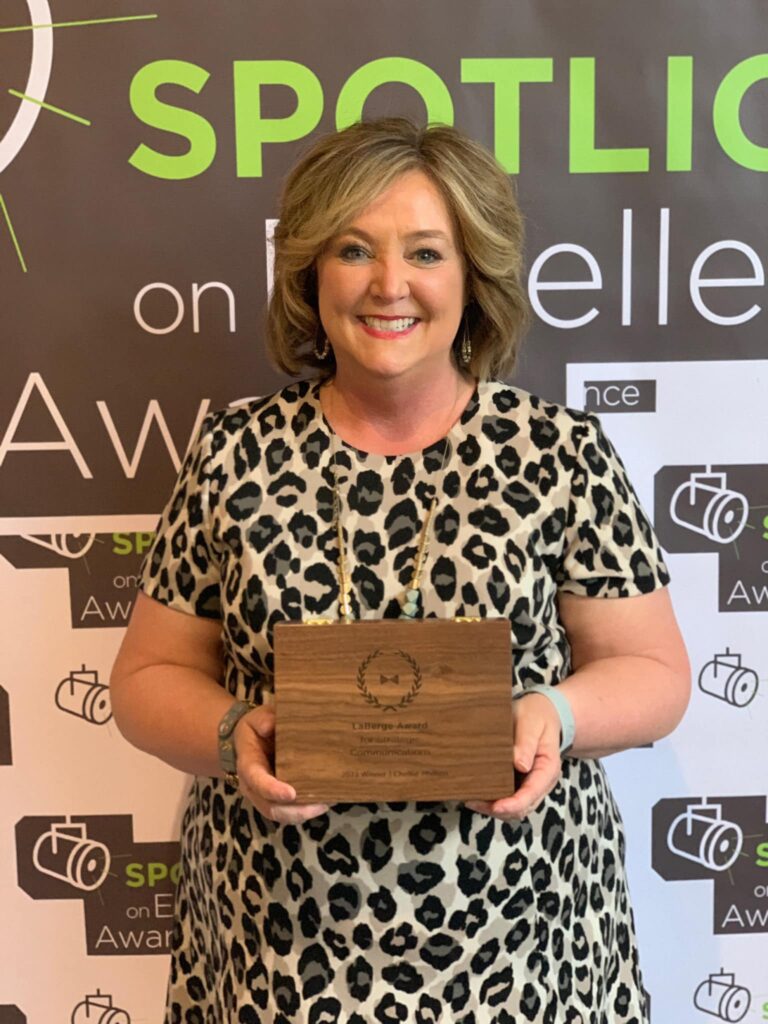
And so as we had worked through a couple of sessions, one night, he told me about a story. We were talking about why he was interested in this. And as a kid, he used to go with his dad on the weekends to do repairs around a rental property that they had. But it wasn’t so much the rental property that he enjoyed, because he knew that their rental property funded the family vacation every year. And so it was about, in his mind, having this property meant we got to do fun things as a family.
And that’s really where his core interest and he’s always dabbled in it over the years, like he’s kept an eye on the market. He didn’t go out and broker properties or anything. But he had kept an eye on what were great places to do this or what’s trending in this market. And he had kept up with it throughout all these years, because his dad had planted that seed when he was a younger child. And I told him that’s your story. That’s how people are going to connect with you.
Because you’re not just some broker at this point in time, you have a personal reason that I want to be able to share the joy and the memories that I had as a child with your family. I want to make it where you can go on vacation, or where you can do these special things, to continue growing that. So what we did is we adapted his LinkedIn profile to tell that story because the summary area on that LinkedIn profile is what I call some high dollar real estate. And it’s where you can make that connect. You have a little bit longer to be able to talk about what you’re doing and why you’re doing it.
And so I had him really focus on and tell that story in that summary area. And then on his social media, do some videos talking about as a child, I remember this and really tying it in so that people could get a feeling of who he was and that he was totally genuine, that he was there to help them make these experiences for their family so much better. And he had a lot of success. When he made that change people were already interested in it.
You know, the great thing was that being in banking, as he understand the financing side of it too, so he helped people navigate that piece of it by putting them in touch with people that can make their dreams come true. And so that’s what I really want people to focus on is when they’re talking about their brand, their brand should be authentic to them. It should say who they are. It should feel like I’m having a conversation with my best friend. Or at least on a corporate since that’s a great coworker or something for you to share on your LinkedIn, not get too personal. But that is really how I’m going to connect I want you to understand that this is more than just a job to me.
“What I really want people to focus on is when they’re talking about their brand, their brand should be authentic to them. It should say who they are. It should feel like I’m having a conversation with my best friend, or at least on a corporate since that’s a great co-worker or something for you to share on your LinkedIn, not get too personal.” ~Chellie Phillips
Absolutely. And you’ve already addressed this, but I want to hone in on this message for everyone that is watching or listening and reading this. What’s the big outcome you hope your clients will accomplish through working with you?
So, for me, getting the email, especially from like a young 25-year-old or something, that’s just entering into their professional career. I love getting their text or a video message or something that is like, “I nailed the interview. They offered me the job before I even left the building.” It’s so exciting for me because I can feel their excitement, their enthusiasm about where is the world going to take me now. And being able to know that I had a little piece in helping them get started in that direction is awesome.
But for the clients that are more of my age, we’re trying to get solidified. This is the next chapter in my life, what do I want to do? That knowledge that we do have that power. We can control where we go next, and that I can achieve these things. So if there’s something that I’m passionate about, or there’s a skill or something that I really want to focus on and deliver, there’s a place in the workforce for that.
And so being able to help them tie in the skills that they have with an organization that values them in a way where they feel appreciated and they love showing up. I mean, because we spend, I think it’s like 90,000 hours of our lives we spend in the workplace. You think about all those hours that we’re never going to get back. So knowing that, it’s something that I look forward to not that I got to mentality. That’s what makes me happy. And that’s why I enjoy working with the clients and helping them get on that success path.
This is just wonderful. So I feel like the next most important question for me to ask you is, can you share some of the ways that people can work with you? What is your program, your service suite? Let’s get into that piece now.
So for some of the younger clients, maybe personal coaching isn’t your thing. But if it is, of course, I offer personal coaching. But I also have an online course that walks you through building your resume, setting you up for interviews, how do I write the cover letter, how do I check my LinkedIn to make sure I have all the appropriate things. So that’s a way that you can manage the process yourself. If you don’t want to invest in sitting down an hour a week or an hour every other week coaching with somebody and walking through it, you can take that and do it self paced and there’s check marks along the way. There’s even a few times in there, you can send me some samples, and let me look at so you get feedback from me throughout the process as well.
Then, of course, there’s the personal coaching. So if you’re really looking to amp up your presence in the workplace, we’ll walk through each piece of that with you. We’ll dissect and rebuild your LinkedIn profile in a way that’s designed to get you attention from recruiters. And one thing I tell people is, especially salespeople, it’s a way to help lead generation as well because people want to connect with whoever they’re doing business with.
So don’t discount that just because you already have a job. Your LinkedIn profile is one of the most important things because when people start to work with you, they’re going to Google your name and they’re going to see what comes up and they’re going to look and see, are they the professional that I think they are or not?
And so if you’re serious about that, you want to use it for leads, or you want to use it to find that next best opportunity, we can really dive into that. I have a six-week coaching program that we meet for an hour, every week going through that, get a lot of feedback, a lot of back and forth through email, making changes and getting things set up. And then, of course, I do speaking and corporate training events.
If you’re on the corporate side, and you want to bring me in to work with either a group of employees, or have a whole training day where we talk about anything from leaving from a cubicle, because I tell everybody that leadership is a verb, it’s not a title. So it doesn’t matter whether you’re in a corner office, or whether you’re sitting in a cubicle, you can make choices and you can make decisions that can spread a culture throughout an organization.
So we can do training for any kind of specific that you have an area that you want to work on. I tell everybody that I love to have a conversation, especially on the corporate side, with what are the goals and values that you have as a company, so that we can really tweak that message and we can really go in and attack and make sure that we’re getting the behaviors and the expectations that you want addressed. So that everybody is on the same page and moving for that same success mark.
So I need to send people to you my dear lady. Where can we send people to learn more about you and about your product suite, some of the clients you’ve worked with, and all of that fun stuff? Hit me up right now.
The best place to find all of it is my website. And that’s chelliephillips.com. You can find everything from the courses, to what I speak on, to what I train on, to the books. And there’s a whole bunch of free resources on there as well. If you want to just dip your toe in it, see where you stand on certain areas and what do I actually need help on to really improve. So there’s a whole bunch there for people to spend some time going through.
I love everything about it. And I’ve actually been to your website, which is why I was thinking, there’s so much to glean from all the different resources that you have there and all the different touch points of how deep do I want to go? How serious is this for me? What stage am I at? What are my intentions and the things I want to accomplish?
And I wanted to just share, as I did off the top, that you have a couple of books. In fact, you just mentioned that you have three, but the two that I know, let’s talk a little bit about those. And you also mentioned the third one. The first one, honestly, you can tell when you’re speaking to a branding expert, because listen to these titles again, guys: When in Doubt, Delete It. I cannot wait to hear what that’s about. The second one I mentioned was Get Noticed Get Hired. And you have a third one, please tell us what that one is. And let’s dive into the overarching mission of each of the three books.
Absolutely. So the third one is Culture Secrets, which is dealing with the corporate culture and secrets any leader can use to build a value culture inside the organization. But I’ll start at the beginning of the journey with you because the first book would not have happened had I not had that jerk for a boss. And it freed me up and it was so amazing at that time.

Like I said, initially, my background was in journalism. And if you’ve ever been through school, and you’ve had to write an essay, you know that you give it to the teacher and it gets marked up and they bring it back to you. Same thing happens for us journalists, we give our our story to an editor. And it looks like somebody’s blood all over it with a red ink pen when you get it back. Fix this, change that, delete that, move this, do that.
And so, one night, I was sitting on the couch, and I was actually editing our corporate newsletter at that time. And I was using the editing marks because that’s what I grew up using. And so there’s special marks for different things that you do. One of them is the delete mark, one of them is insert, like add something in here, then there’s the paragraph mark that’s like make a new beginning. Then there’s move which is like a little swirl kind of thing. And that is move this piece to here and move that one here because it would flow better.
And then my favourite mark of all is one called stet. And it’s just the letters S- T- E- T. And if you’re not familiar with that, what that means is after the editor has gone through and suggested some changes, they get to the end, and then they go, now that I’ve read it all the way through, I think you were right, initially, I want you to leave that the way it was. So to me, that book talks about what I call five buckets of edits for life.
And there’s some things that we should delete, there’s things that we should insert, there’s things that we should begin, there’s things that we should move towards or away from. And then there’s things that we should keep authentic to ourselves, no matter what someone else tells us because they’re the core part of our beliefs as a person. And so in that book, it goes through deleting that negative talk inside our head, or that idea that we have to be perfect before anything happens.
And I’ll throw this out there, since I’m talking about perfection now, because it crossed my mind is that women, especially in the workplace, if you have a man and a woman looking at a job position, 90 per cent of the time a male will apply for a position if he thinks he’s at least half qualified, based on what they say they want. A female will only apply if she thinks she’s 100 per cent qualified and can check off every box. Women, we have to change that. You’re as smart as they are. You can go in and learn the things that you don’t know, just like any man can. But you have to have that confidence, you have got to have that about you that says, I’m gonna go for it.
“If you have a man and a woman looking at a job position, 90 per cent of the time a male will apply for a position if he thinks he’s at least half qualified, based on what they say they want. A female will only apply if she thinks she’s 100 per cent qualified and can check off every box.” ~Chellie Phillips
Because this is something I think I can do and I want to do. But we have all these things going on whether it’s the imposter mindset, whether it’s that perfection idea, whether it’s because we feel like I’m missing just one little piece, or how am I going to balance all these things out. That book addresses all of these areas in life. And I share some stories from my life and my career through them. I share some others from people that I’ve interviewed when I was at the newspaper and encountered along the way.
And then some of them are just general life happenings. I tell everybody, it’s like sitting on the front porch with your best girlfriends sharing a sip of southern sweet tea or maybe a little stronger depending on what’s been going on that week. Talking about life. These are the things I wished I had known or I want to share with other people to be able to get them to take that step and open up that door of opportunity that’s out there. So that was the first book. It was more a personal success story.
The second one “Get Noticed Get Hired” came from working with all of the young professional women in my life about how do I show up? How do I get the job that I want to get? How do I get noticed for all the right reasons? And then I love the last part of that book, especially. Because, you know, when we get hired someplace, we have that, that 90-day probationary period. Let’s see if this is gonna work for both of us or whatever. So the last part of the job that book is about, I’ve got the job now. So how do I stay on their radar for all the right reasons, so that I set myself up for a promotion along the way.
And so that book basically walks you through resumes, interviewing, LinkedIn profile building, everything that we talked about, but in real step-by-step format. This is a great gift for someone that’s going to be graduating and starting their career journey. Great for high school kids that need to go ahead and start thinking about it.
One of the things that I tell a lot of my younger clients, those that I actually coach, is that they need to start thinking about this earlier. Today’s age with all the social media, things follow you throughout life. So just because you did it three years ago doesn’t mean that someone doing a search on you is not going to find something that you posted about something that you ranted about something that you maybe thought was funny at the time, but someone might find offensive later, that’s going to be used against you to count you out as the client or the potential employee that they want to have inside that organization.
So you have to start early, cleaning that up, and actually making yourself that irresistible candidate that we were talking about. And then finally, the third book is that corporate piece. So I’ve worked on the personal journey with the first one, I’ve worked on the young professional with the second one. And now the third one is if I’m going to send that young professional out into the workforce, I want them to find companies that respect them that value them, and that they want to love to be at for the next 30 years, hopefully.

And it’s all about developing that culture inside the organisation like we talked about with that value formula. And the thing that was really, probably the most interesting to me is, as I did a lot of interviews from anywhere from like I said, WD 40, Panasonic, automotive, several tech companies, a mom and pop franchise that sells gourmet popsicles, how do we keep that culture no matter what size the business is that we’re going?
So in that book we talk about as an entrepreneur, if you have a small business, why does it matter? Why does culture matter for you, if you have three or four employees? Well, they’re going to impact every customer that walks in that door, and you want the repeat business. Same thing with your global-sized companies that we want the right people working for us, we want the right products to go out the door, we want them to go out effectively.
And we want to keep these people because we don’t want to have to rehire and retrain all the time after we get things moving along that way. And the really great thing is that people were so generous with their learns in that book. They were as willing to share what didn’t work as they were with what did work. And I think that’s what makes that book the most valuable in that setting.
Because we all know if we can learn from someone else’s mistake, we’re starting from a point ahead of where someone else did. So we can kind of get there a little bit faster and a little bit easier. Because we don’t have to make all those same mistakes by ourselves going through that process. So it’s a great book, no matter what organization you’re with, that can actually walk very practical steps on how do I build leaders? How do I set this culture in motion? How do we have conversations with our employees to get it done? And at the end of the book, there’s some case studies that I included from three very different markets, so that you can see from a small business to a multibillion dollar manufacturing organization, how it works, and why is important.
Well, I love everything about this. So many resources, so many reasons to want to work with you. Chellie, I want to ask you this for those people. And we all know who we are, who love to hear all of these value propositions to level up their lives, but never really tend to get off the fence. What would you say to them?
You know, the first thing I like to do is just close your eyes for a minute. And I want you to just to imagine that ideal scenario. Think about the feelin. How you’re going to feel that day when you get up. How you’re going to feel when you walk into the building. Who’s going to be around you, the people that you’re going to encounter, the work that you’re going to do.
And then when you have that feeling and those ideas in your mind, compare that to what you’re going through every day where you’re at right now. And to me when you can really visualize it and when you can think into it, then you deserve to feel that ideal way every day, doing the things that you enjoy doing. And so, I encourage people to really take that internal view that I am worth it that. I do have value to offer. And that I can actually create the environment that I want to be in every day doing the things that I love and enjoy.
And then that little voice that’s gonna go off in your head that says, well, that sounds good. But this but that, but whatever is like, just work on tamping it down. Every day, turn it down, like literally turn the volume down. Like, I’m not listening to you. And take that courageous first step. If the first step for you is go peruse the want ads online and see what kind of jobs are out there.
Maybe something strikes your fancy, maybe it doesn’t. Print it out, stick it on your computer, or somewhere that you see it, and every day when you look at it, think about what you’re doing and how that relates to that or how it doesn’t relate to that. And make a note: I do this or that, that relates to that, or that’s a skill that I have.
And I bet within a couple of weeks, you’ve worked through that job description, and there’s something that you’re doing that ties in to that new role that really fascinates you, that intrigues you, that’s gonna make you feel that I am somewhere doing what I’m supposed to be doing.
Absolutely, guys, how irresistible are you? One way to find out is to work with Chellie Phillips. Go hang out with her. Chellie, can you do us a favor and tell people what your LinkedIn profile is? So they can see what you’re talking about? Again, your website and if there’s anywhere they can hang out with you, whether it’s a newsletter, any socials. Let everyone know every way that they can have touch points with you.
Absolutely. I am very active on LinkedIn. I have a newsletter that goes out through LinkedIn and everything. And LinkedIn is like the website. And it’s actually Cellie-Phillips. So it’s personalized, which is a tip for everybody out there, personalize your LinkedIn profile URL. And, of course, I’m on Facebook, Instagram, all the major platforms and everything.
I do have a podcast too with culture secrets if you’re interested in culture. You can sit there and join the dialogue and hear from some of the people that I actually interviewed in the book. And then, of course, like I said, on the website, there’s so many things that you can subscribe to. There’s a newsletter on there, that’s particular to personal branding, whereas the one on LinkedIn is more about corporate culture and leadership and that kind of thing.
But I would just encourage you, any of those places, reach out to me, drop me a message, say, I heard this, I liked that, whatever. Because I engage with my audience wherever I am. And that’s the thing is like, if you comment on something, I’m probably going to comment back and be like, “Oh, really? Why do you think that” or “thanks for thinking that.” I’m going to have a conversation with you and want to know why and how and what is going on.
Because that’s what it’s all about. I was talking about before that the belonging is the piece that really matters. And the connection is what matters to me is that the more we can connect with each other, and the more I can learn about you, and the more you learn about me, the better off we all are in the world.
Absolutely. Amen to that. I absolutely agree on so many levels. And I want to ask you, as we get ready to close off, are there any words of wisdom, any insights, perhaps something that you wish you’d known, that may have kind of jumped started your journey a little sooner to your purpose here that you are living in today, which is your service?
Can you share that, so we can kind of round things off? And tell people why being irresistible them is important, whether it is the work that we’ve really been talking about today, or whether it’s even on a personal level?
Absolutely. So two trains of thought just came up. The first book that I wrote was really about the personal journey. And I talk about, a lot of times we keep the personal stories to ourselves. And, I think it’s important that we as people are not afraid to share those because that’s where the real impact comes. That’s where the empathy comes. That’s where the emotion happens. And that’s what connects us as people, that emotion that we create with the stories that we tell.
“A lot of times we keep the personal stories to ourselves. And I think it’s important that we as people are not afraid to share those because that’s where the real impact comes, that’s where the empathy comes. That’s where the emotion happens, and that’s what connects us as people, that emotion that we create with the stories that we tell.” ~Chellie Phillips
And so just knowing that, hey, none of our journeys are perfect. None of them are a straight path. There’s lots of turns. There’s lots of winding roads. There’s lots of lefts and rights and even some unpaved roads, and therefore, you know, for all that comes about. And so just because your journey hasn’t been a perfectly straight one or a very linear one, doesn’t mean there’s anything wrong with that journey.
I’m a firm believer that life is preparing us for what comes our way. And, I tell everybody, I said yes, it sucked when I got that email from my boss. But, it took that for me to be able to see other doors opening and being ready to make that move someplace else. Because had things just been kind of going along as they were, I wasn’t super happy, but I wasn’t totally miserable. Yet, it was like, I probably would have stayed after having so many years invested.
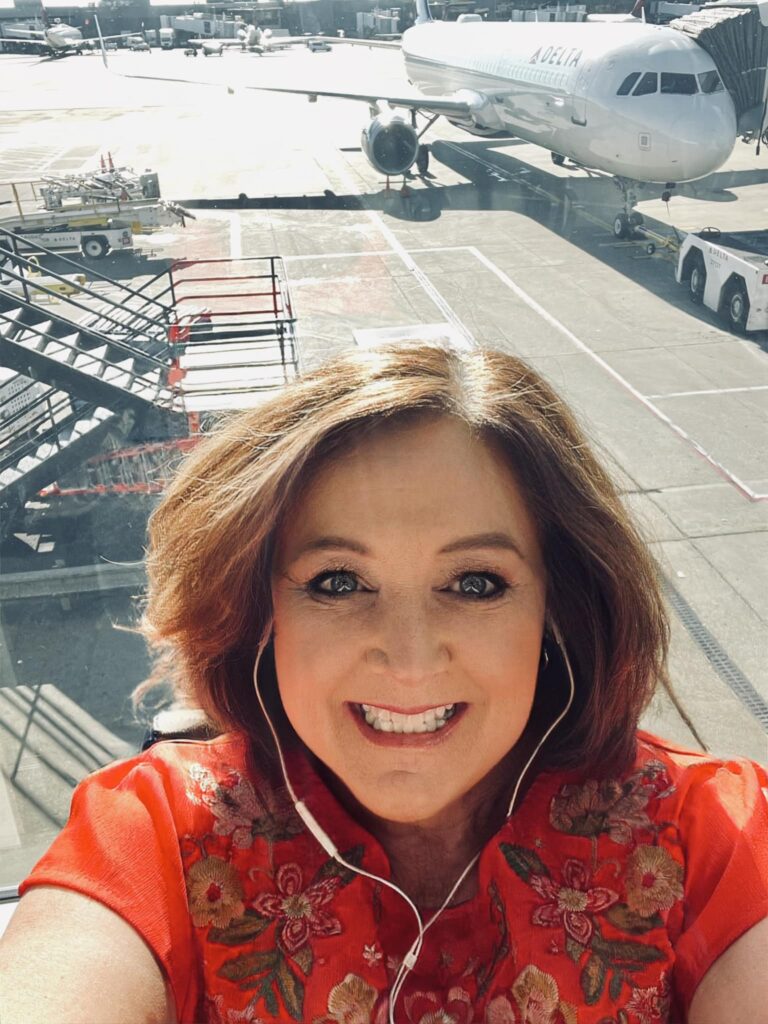
And I look back now and go, if it hadn’t been for that, what would I have missed out on being able to share and do and accomplish. And so I say, be open to that and be willing to share your story and connect with other people. And then as far as the professional side, something I wished I had really grasped way earlier in life is something that I tell a lot of my clients is, no one’s going to pay you what you’re worth, only what they think you worth.
But the really great thing is that we can control what people think, whether that’s through the brand that we’re creating, how we interact with them in the office, on the phone call, through our emails in our text, because branding is so much more than just your LinkedIn profile. It really encompasses everything like how do you show up in the workplace? How do I interact with clients? How do I interact with co-workers? That builds your brand, as much as building your profile and sharing out what’s going on in the industry and what certifications you’ve gotten, what you’ve accomplished along the way. And the professional and the personal tie together so much in the fact that it’s all about the relationships that you build, invest in good relationships, invest in the people that you surround yourself with.
And be careful who you give your time to. That’s probably the biggest thing that I would say is that you don’t waste your time on people who don’t believe in you or don’t have the same vision as you. Know that you’re worth that vision and that you can accomplish it, and there’s someone out there that’s going to root for you and be your cheerleader. And if you need that cheerleader hop on my page, I’m happy to tell you and remind you on a constant basis is that you can achieve the things that you want to achieve.
“Don’t waste your time on people who don’t believe in you or don’t have the same vision as you. Know that you’re worth that vision and that you can accomplish it, and there’s someone out there that’s going to root for you and be your cheerleader.” ~Chellie Phillips
I love it. How fabulous are you Chellie. Said that off the top and I say it again, thank you so much for agreeing to come on and share your wealth of wisdom, your lived experiences, your insights. I know 1,000 per cent that everyone who is even slightly ignited by this should go over and get more value from you. Can we one more time tell them your website URL?
Absolutely. It’s celliephillips.com. Make it super simple.
Thank you so much for coming on, Chellie. I feel like I need to bring you on to talk about some of these items that we’ve really just touched the surface on and maybe deep dive some of them. I’d love to have you come back on.
I would love that so much. It’s been a pleasure chatting with you.
Likewise.
Folks, if you’d like to learn more about what we touched upon today, I encourage you to head on over to join all things Chellie Phillips immediately and share this conversation with everyone you know, because the greatest service to self and I say this every single time you guys know this is including service to others, right?
You want to lift up everyone around you as you lift up. Otherwise, you’re gonna be an island, just all by yourself in your greatness. You want the greatness to be surrounded in every fabric of your life. And that’s important.
I also encourage you to subscribe, as I always do to my Youtube channel and hit the notification button at The Open Chest Confidence Academy so you’ll never miss an episode as we drop them. You can also download The Transform Your Confidence Show on podcast platforms and also please give it a five star rating if you feel that what we share with you each week is a valuable resource to assist your journey to empower your confidence with actionable insights because it’s the action piece that oftentimes is the missing link.
You can also read the podcast at our blog at theopenchestconfidenceacademy.com/media/ podcast and as always, I will see you next time for another invaluable episode packed with all kinds of insights and learnings a leveling up to empower your work and your life and of course, always the biggest thing of all your spirit so you can do so much more for yourself and others.
Thank you so much for watching listening and reading this and I’ll see you next time
To contact Chellie Phillips: Web, Facebook, Instagram, LinkedIn



